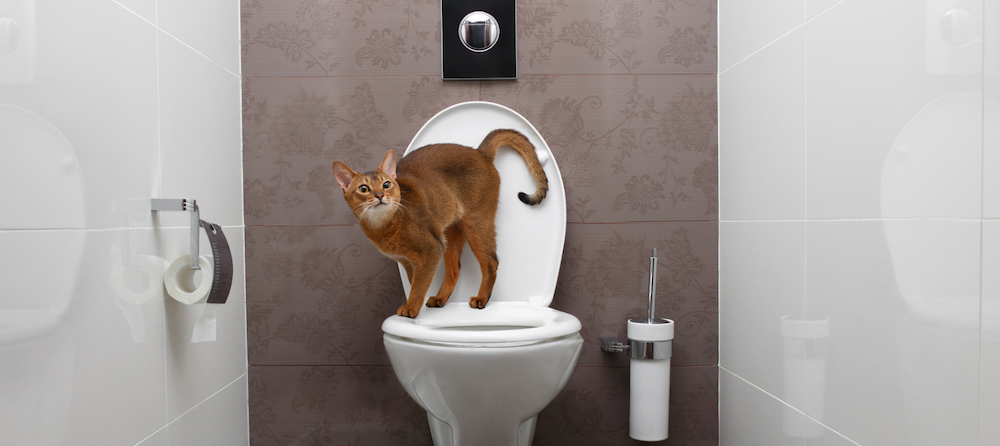The article below involving How to Dispose of Cat Poop and Litter Without Plastic Bags is seriously stimulating. Don't miss it.

Intro
As cat owners, it's important to bear in mind how we take care of our feline buddies' waste. While it might seem practical to purge pet cat poop down the bathroom, this method can have damaging consequences for both the setting and human wellness.
Alternatives to Flushing
Thankfully, there are much safer and much more accountable ways to dispose of cat poop. Consider the adhering to alternatives:
1. Scoop and Dispose in Trash
One of the most typical approach of getting rid of pet cat poop is to scoop it right into a biodegradable bag and toss it in the trash. Make sure to use a specialized litter inside story and deal with the waste quickly.
2. Use Biodegradable Litter
Opt for eco-friendly cat clutter made from materials such as corn or wheat. These trashes are environmentally friendly and can be safely dealt with in the trash.
3. Hide in the Yard
If you have a backyard, think about burying cat waste in a designated area far from vegetable yards and water sources. Make certain to dig deep enough to avoid contamination of groundwater.
4. Mount a Pet Waste Disposal System
Purchase a pet dog garbage disposal system particularly developed for feline waste. These systems make use of enzymes to break down the waste, lowering smell and ecological influence.
Health Risks
Along with ecological problems, purging feline waste can likewise position health risks to human beings. Pet cat feces may contain Toxoplasma gondii, a bloodsucker that can trigger toxoplasmosis-- a potentially severe ailment, especially for pregnant females and individuals with damaged body immune systems.
Environmental Impact
Flushing pet cat poop presents harmful pathogens and parasites into the water supply, posturing a considerable threat to water ecosystems. These impurities can negatively impact aquatic life and concession water quality.
Final thought
Liable pet ownership prolongs past providing food and shelter-- it likewise entails correct waste monitoring. By avoiding flushing cat poop down the toilet and choosing alternate disposal approaches, we can decrease our ecological impact and secure human health and wellness.
Why Can’t I Flush Cat Poop?
It Spreads a Parasite
Cats are frequently infected with a parasite called toxoplasma gondii. The parasite causes an infection called toxoplasmosis. It is usually harmless to cats. The parasite only uses cat poop as a host for its eggs. Otherwise, the cat’s immune system usually keeps the infection at low enough levels to maintain its own health. But it does not stop the develop of eggs. These eggs are tiny and surprisingly tough. They may survive for a year before they begin to grow. But that’s the problem.
Our wastewater system is not designed to deal with toxoplasmosis eggs. Instead, most eggs will flush from your toilet into sewers and wastewater management plants. After the sewage is treated for many other harmful things in it, it is typically released into local rivers, lakes, or oceans. Here, the toxoplasmosis eggs can find new hosts, including starfish, crabs, otters, and many other wildlife. For many, this is a significant risk to their health. Toxoplasmosis can also end up infecting water sources that are important for agriculture, which means our deer, pigs, and sheep can get infected too.
Is There Risk to Humans?
There can be a risk to human life from flushing cat poop down the toilet. If you do so, the parasites from your cat’s poop can end up in shellfish, game animals, or livestock. If this meat is then served raw or undercooked, the people who eat it can get sick.
In fact, according to the CDC, 40 million people in the United States are infected with toxoplasma gondii. They get it from exposure to infected seafood, or from some kind of cat poop contamination, like drinking from a stream that is contaminated or touching anything that has come into contact with cat poop. That includes just cleaning a cat litter box.
Most people who get infected with these parasites will not develop any symptoms. However, for pregnant women or for those with compromised immune systems, the parasite can cause severe health problems.
How to Handle Cat Poop
The best way to handle cat poop is actually to clean the box more often. The eggs that the parasite sheds will not become active until one to five days after the cat poops. That means that if you clean daily, you’re much less likely to come into direct contact with infectious eggs.
That said, always dispose of cat poop in the garbage and not down the toilet. Wash your hands before and after you clean the litter box, and bring the bag of poop right outside to your garbage bins.
https://trenchlesssolutionsusa.com/why-cant-i-flush-cat-poop/

As an enthusiastic person who reads on Can You Flush Cat Poo or Litter Down the Toilet?, I assumed sharing that segment was worthwhile. Sharing is nice. Who knows, you may be doing someone a favor. Many thanks for going through it.
This Site
Comments on “Dangers of Disposing Cat Poop in Your Toilet - Precautionary Measures”